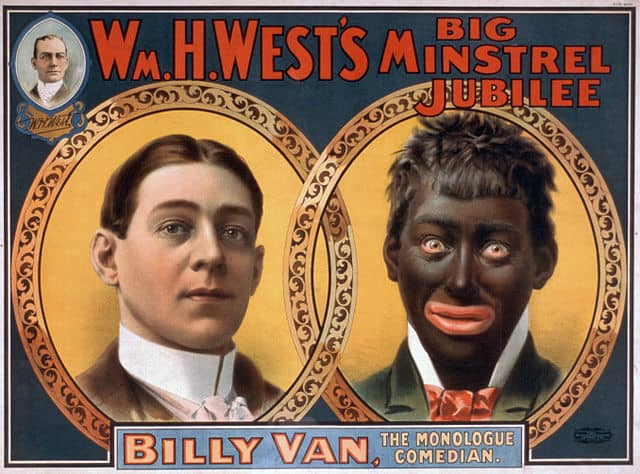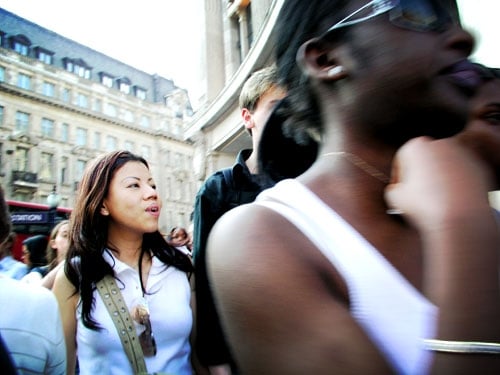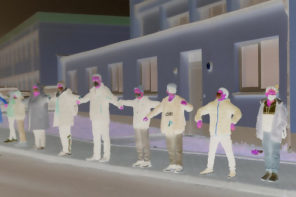I love my hometown of Baltimore, Maryland. I’m sure you’ve heard about Baltimore lately, with its sagging school system, serving a mainly African-American population; its yet again exploding minority murder rate; and the big one, the non-guilty verdicts for police officers involved in Freddie Gray’s fatal arrest in April 2014. After Freddie Gray’s death, Baltimore’s long-brewing racial tension exploded in street protests (deemed riots by the media), where mainly African-American Baltimoreans called for respect, and greater equality. Through these events, cable news media dramatically portrayed a seemingly insurmountable tragedy: Baltimore has a Race Problem.
As a Baltimorean, I crinkled my brow and thought “what is a Race Problem?” It sounds harder to climb than Mount Everest, and harder to solve than any theoretical math equation. As a physical anthropologist, I answered my own question with “actually, race doesn’t exist.” If you said “Huh?” right there, let’s do what America has been avoiding lately; let’s talk about race.
Biologically, race doesn’t exist. Socially, we have a real problem with this ugly race thing that we think is biological.
When I say this, here is the big question that runs through the mind: I can see that people look different; aren’t those different races? Great question! Let’s start by analyzing what “a race” is, and what biological traits are wrapped into “a race.” The main race categories in America are White, Black, Asian, Native American, and Other: two opposite colors; one continent; an ethnic group; and a catch-all category including billions of people and Chewbacca. These are not biologically defined groups. No human is biologically white or black. These are social terms; they have a social existence, and they have social power. Let’s look at race in America to separate out this false thought that race is biological, first by taking a walk through our history, and then looking at our biology. For Baltimore.
Let us start by recognizing that America has a Race Problem. Here we are at the Race Problems Anonymous meeting: “Hi, my name’s America, and I have a Race Problem.” “Hi America,” say the rest of the countries on Earth. In the spirit of these meetings, let’s focus on our own problems, starting with the first time America took a drink of its race classification system. The United States was born with racial divisions in its blood, because we inherited it from our parents: European exploitation of Africans through slavery. Europeans brought their addiction for owning people to North America, and the colonies thrived on it. Simultaneously, the American colonies agitated for freedom from Great Britain’s oppression, culminating in the Declaration of Independence that stated “…all men are created equal, …with certain unalienable Rights, that among these are Life, Liberty, and the Pursuit of Happiness.” Well done, America; rights for everyone. Wait a minute: what did the word “men” mean when the Declaration’s authors and signers owned slaves at the same time?! The word “men” actually meant White, land-owning, wealthy males. Women, poor people, and non-White people were not protected, as seen in the birth of the United States, where these people were not allowed to vote, and White people could continue to own African and Native American descent people. For the next 87 years, the US continued slaving, denying those “truths” for many people in our country.
Now, how does one celebrate their own unalienable rights while concurrently taking those same rights away from their neighbors? Create a social system by which people are dehumanized. This is where our racial classification system came in.
Race was used to judge the value of a human being. If someone was African, or of African descent, they had no rights, and could be sold for a negotiable price.
If someone was of European descent, they were considered priceless, unable to be owned because they had unalienable rights. This social value system was easy and fast to judge from a distance because it used physical traits to mark group membership. Dark, kinky hair; dark skin; wide nose; these physical traits were said to be the hallmarks of beastliness, making ownership of people with said traits acceptable. The traits are biological; the idea that these traits mark someone as property is not biological – it’s social injustice.

Image by Strobridge & Co. Lith , Public Domain
Finally, the United States abolished slavery, but couldn’t fix the social stigma that it had ingrained into people’s psyche. The racial categorization system was no longer used to officially and monetarily value people, but it was still used to judge their social value. Bank loans are a great way to think about your social value. If you request a loan for a house purchase, the bank then searches vast amounts of records to determine if you are worthy, or valuable, enough for that loan. This information should only involve your financial history and practices. The bank doesn’t need to know anything about your biology; timely loan payments are not coded for in DNA. However, frequently in America, people who can be visually classified as Black based on biological traits, have been considered not valuable enough to invest in by loan officers who were White.
This is why America stands at the Race Problem Anonymous podium. We have an active problem with judging people that started with slavery. Even 151 years later, we are not sober at this meeting. We are, in fact, terribly hungover from slavery.
We know judging people is wrong, but this racial classification system is deeply ingrained.
We have tried to stop, to get clean with phrases like “we don’t see race,” and “post-racial America.” But America finds itself back at the same Race Problem Anonymous meeting year after year, because we keep doing things like locking the car doors only when young African American men walk by, and harshly judging Black women for being Black, and women. We’ve tried not talking about race, but it’s not working. So let’s dive into the biological markers we are hung up, and hungover, on.
This social race system uses biological traits to determine your membership in a particular group. Those traits do vary around the world. They do not, however, give you any information about the value of a human being. Take hair shape for example. Hair shaft cross-section dictates the overall behavior of your hair, from puffy to totally flat. Oval hair shafts create hair that is silky and wavy. Flat and ribbon-like hair shafts result in a kinking behavior. Perfectly round shafts are associated with straight and course hair. Many individuals have more than one shaft type growing on their head at once. Do any of these hair types predict how many advanced degrees a person will achieve in their lifetime? No; having oval hair shafts does not, for instance, inhibit or enhance your ability to write a Master’s thesis. Does an oval shaft mean the hair will be wavy? Yes. Biologically, there is no value inherent in that hair shaft morphology; it’s just part of normal human hair variation.

Photo by Laura Smith (flickr, CC BY-NC-ND 2.0)
Another biological trait the race system has hijacked is nose shape. In America, thinner noses are included in the physical traits of the “White” race, and wider noses are included in the traits for the “Black” race. Let’s look at the biology of noses. Noses are actually one situation where, on average, we do see different shapes between some populations. For this trait, I’m going to focus on the average skeletal nose width (the boney part, not the nostril part) in European descent people, and in African descent people. What we find in studies of human variation is that African decent people frequently have rounded and wide anterior nasal apertures (opening for the nose in the skull), and European decent people tend to have narrow and tall anterior nasal apertures.
What does this trend, wide in African descent and narrow in European descent, mean? If we use the thinking of America’s race system, wide means unworthy and narrow means priceless. Does a nose shape biologically show that? No. Biologically, we see something that tells a story of human survival in extreme environments.
Humans have lived in a multitude of extreme climates around the world: hot and humid, hot and dry, cold and wet, and cold and dry. Extreme climates present physical challenges to human populations, and, over time, we see that human groups physically change, or adapt, to their environment. Nose shape is an excellent example. What does the nose do? It’s most important function is to deliver warm, moist air to the lungs; the lungs are made of warm, moist, and incredibly sensitive tissue. Have you ever taken a huge breath through your mouth on a cold, clear, crisp winter day? Straight away, you’re coughing, your chest is burning, and you’re thinking about moving to Key West. That burning results from the damage done by the cold, dry air to the sensitive lung tissue. The nose protects the lungs by slowing down air movement, warming and moisturizing it inside the head before entering the lungs. In fact, we find that the thinner a nose is, the more the air bumps around inside the face, warming and moisturize it more completely. If we look at noses around the world, we see that people who live in cold and dry climates have thinner noses; these groups have adapted through time to better protect their lungs. Northern European populations survived Ice Age Europe for 20,000 years, and many European descent Americans have inherited their narrow nose shape. For people living in Africa, we see that the air is already warm, and frequently humid; there is no survival benefit to having a specific nose shape, and therefore nose width is not restricted to a narrow size. We find average nose width is larger in African humans than in European humans. African descent Americans have inherited these wider noses.
These are nifty clues to our ancestors’ survival around the world. Vladimir Putin? Descended from cold-adapted ancestors. Viola Davis? Descended from warm-adapted ancestors. One of these people speaks out for the respect of women and African Americans, and wins awards for her great work. The other is a former KGB agent, invades neighboring countries, and rides bears while shirtless, according to the internet. Does nose width have anything to do with the trustworthiness of either person? No.I’d trust one with my wallet, and I assume the other has already stolen my wallet, based on their activities and habits.
That is how we should determine the value of a person, based on their personal activities and habits, not on their biological traits.
I’d like to delve into one more biological trait America is obsessed with: skin color. It is the easiest trait to “diagnose” from a distance, so it’s everywhere: #OscarsSoWhite, and #BlackLivesMatter are a couple recent uses of these “race trait” terms. Let’s dig into the biology of coloration. Skin, in humans and other animals, creates little molecules of pigment, called melanin, which are then stored in the skin’s upper layer. Melanin is brown. Here’s a major point I’d like to make: we are brown. We are not biologically white or black. We are various shades of brown. Aloe Blacc and Barry White are darker shades of brown than Shaun White and Jack Black, but they are all brown. Humans present a vast range of melanin production. Where does this variation come from?
Let’s take a walk through our evolutionary past. Homo sapiens, the species we all belong to, evolved and originated in Africa, the oldest member of our species having been identified at the site of Omo Kibish, Ethiopia, aged 195,000 years old. Humans continued to live in Eastern Africa while endeavoring parts of the population spread around the continent, with groups living on the coast of South Africa, 3,881 miles away, by 120,000 years ago. Eventually, groups from Eastern Africa began moving into the Middle East around 70,000 years ago. Humans then spread to Southern Asia and Australia by 50,000 years ago, then to Europe and Northern Asia about 40,000 years ago, and lastly into North and South America about 15,000 years ago.
What we realize from this is that A) we are all African, and B) we were all darkly pigmented when we lived in Africa and when some ancestors left Africa.
That’s right, until recently (and I mean within the last 7,000 years or so), we were all Black.
When people walked out of Africa and into places like Europe and Asia, those ancestors were Black. Actually, they were all very dark brown, as melanin is brown, but we should question what modern color labels mean to ourselves today, and how those labels would be applied to our ancestors.

Photo by nathan williams (flickr, CC BY 2.0)
Now, we see today that there is variation in melanin production by people around the world. Generally, we see that humans who live closer to the North Pole produce less melanin, while people who live near the equator produce much more melanin. This suggests a trend in relation to environmental factors, similar to that of nose width. Now melanin doesn’t cool the body, but it does protect from something else that increases in intensity closer to the equator: ultraviolet radiation (UVR). UVR can penetrate the skin and do damage in two deadly ways. The first danger is that UVR can mutate skin cell DNA, causing deadly skin cancer at a very young age. The second danger is that UVR can enter the blood stream and destroy folic acid, a B vitamin vitally important for proper growth of a fetus’s nervous system during pregnancy. Intense exposure to UVR can result in early death in the first case, and a reduced ability to create healthy babies in the second case. Therefore, what we see in areas of high UVR is skin that produces a lot of melanin, which absorbs UVR before it can get to DNA or the blood stream. Near the equator, melanin saves our lives.
When people left Africa, they continued to produce large amounts of melanin while living in Northern Asia and Europe. Eventually, northern people started producing much less melanin. What triggered this change? We do find that UVR is not all bad, and that humans need to absorb some UVR to produce vitamin D. We make our own vitamin D when UVR passes by the melanin and creates a positive chemical change in the skin’s middle layer. One of the most important vitamin D jobs is to initiate calcium absorption from food. Calcium builds healthy bones, among other things. For the survival of populations over thousands of years, the most important boney structure is the pelvis, because to keep a population going, there need to be babies. Babies need to pass through a well-shaped pelvis, or they can get stuck in the birth canal, resulting in the death of both mother and child. Too much melanin in the skin blocks vitamin D production in low UVR locations, such as Northern Asia and Europe, resulting in malformed bones.
Interestingly, early humans in Northern Eurasia consumed enough vitamin D in their diets to off-set their high melanin production, until they started farming between 10,000 and 5,000 years ago. Farming restricted the range of nutrients people ate, and all of a sudden, people needed their skin to make more vitamin D in these low UVR intensity areas. Northern groups no longer needed UVR protection; they needed to birth babies. Therefore, we see two recent mutation events, one in Asia and one in Europe, where people with new gene variants for low melanin production became the most common lineages in the north, able to absorb what little UVR shined on them.
Biologically, what we see in people’s skin color is a great story of survival and change. As humans have moved around the world, we adapted to environmental challenges.
Darkly pigmented people survive and have healthy babies in the face of high intensity UVR. Lightly pigmented people survive and have healthy babies in the face of low intensity UVR. That’s what skin color actually means. Biologically, we are all survivors. Jack Black’s northern ancestors ate less vitamin D at some point, and then produced less melanin, surviving for thousands of years and genetically contributing to a very funny person. Black’s pigmentation doesn’t make him better than Barry White, whose ancestors warded off the effects of high intensity UVR for thousands and thousands of years and genetically contributed to a fantastic singer.
These biological traits tell fantastic stories of our species. In the end, we are all priceless. This is how race doesn’t actually exist.
If we think back to standing at the podium of the Race Problem Anonymous meeting, America needs to talk about race, not ignore it. When we recognize that race classification is falsely based on biology, we can separate our judgements from our genes. The differences between White and Black are not coded in our DNA; our judgements are falsely dictated by an ugly and oppressive social system.
The great thing about social systems is that we make them, and we can break them. We broke the social system and legal oppression of women.
Votes; land ownership; pants! Yes, America abolished slavery, but we haven’t yet abolished this social hangover of judging people based on their looks. Our race problem is surmountable when we recognize that we are biologically diverse, and socially the same.
As America speaks at the podium, our country should finish with, “Next time I see a person who looks differently from me, I’m going to think of our differences not in terms of an ugly value judgement, but as evidence for our shared chapters in the story of human survival. We may be physically different, but we’re all just struggling humans, surviving the best we can.” Let’s embrace our differences. For America’s future. For Baltimore.
Featured image (cropped) by Ketut Subiyanto (Courtesy of Pexels.com)










Excellent article!
Well put!
Bravo! Excellent article! Your combining of research and humor makes this a fun, educational and informative read.